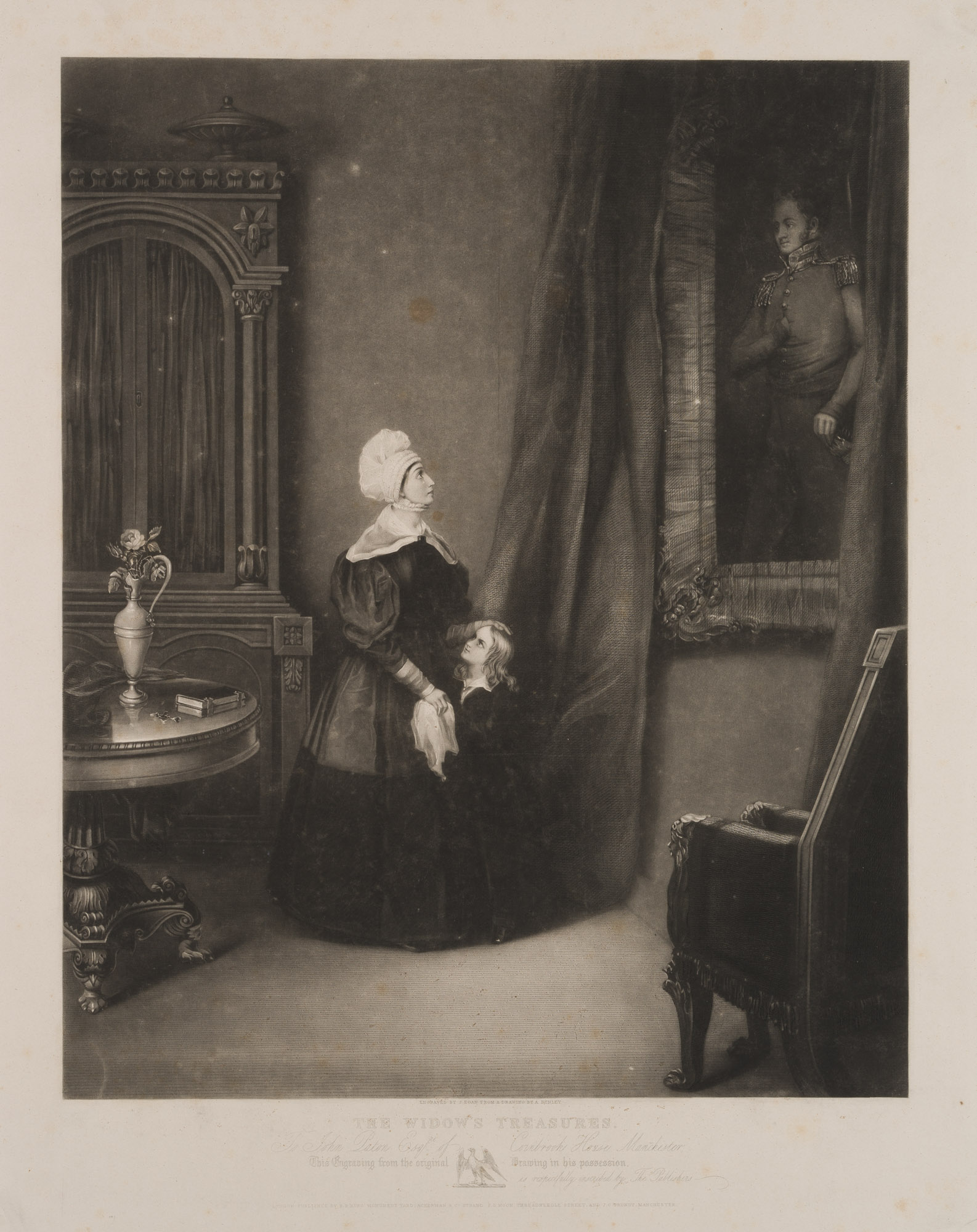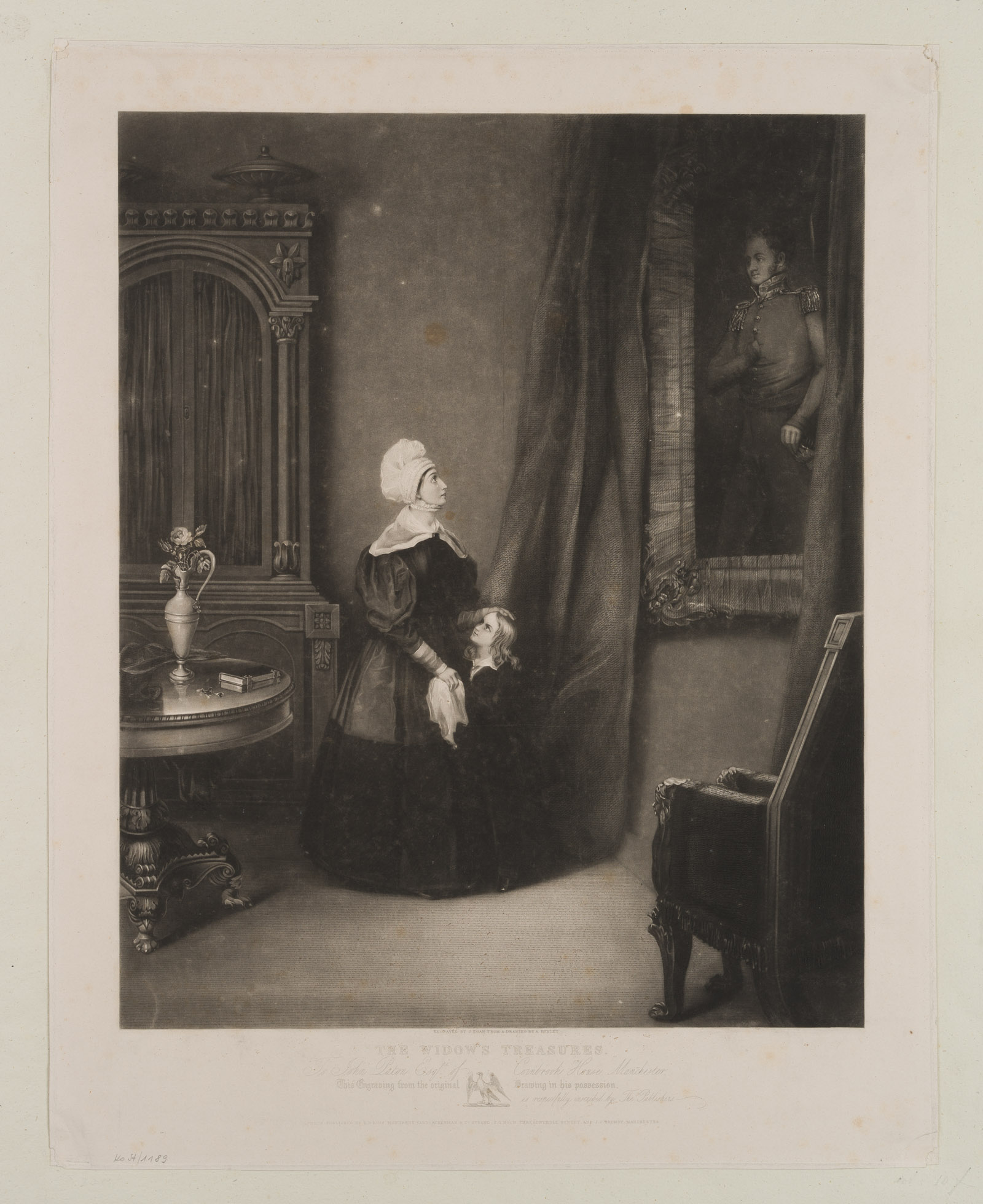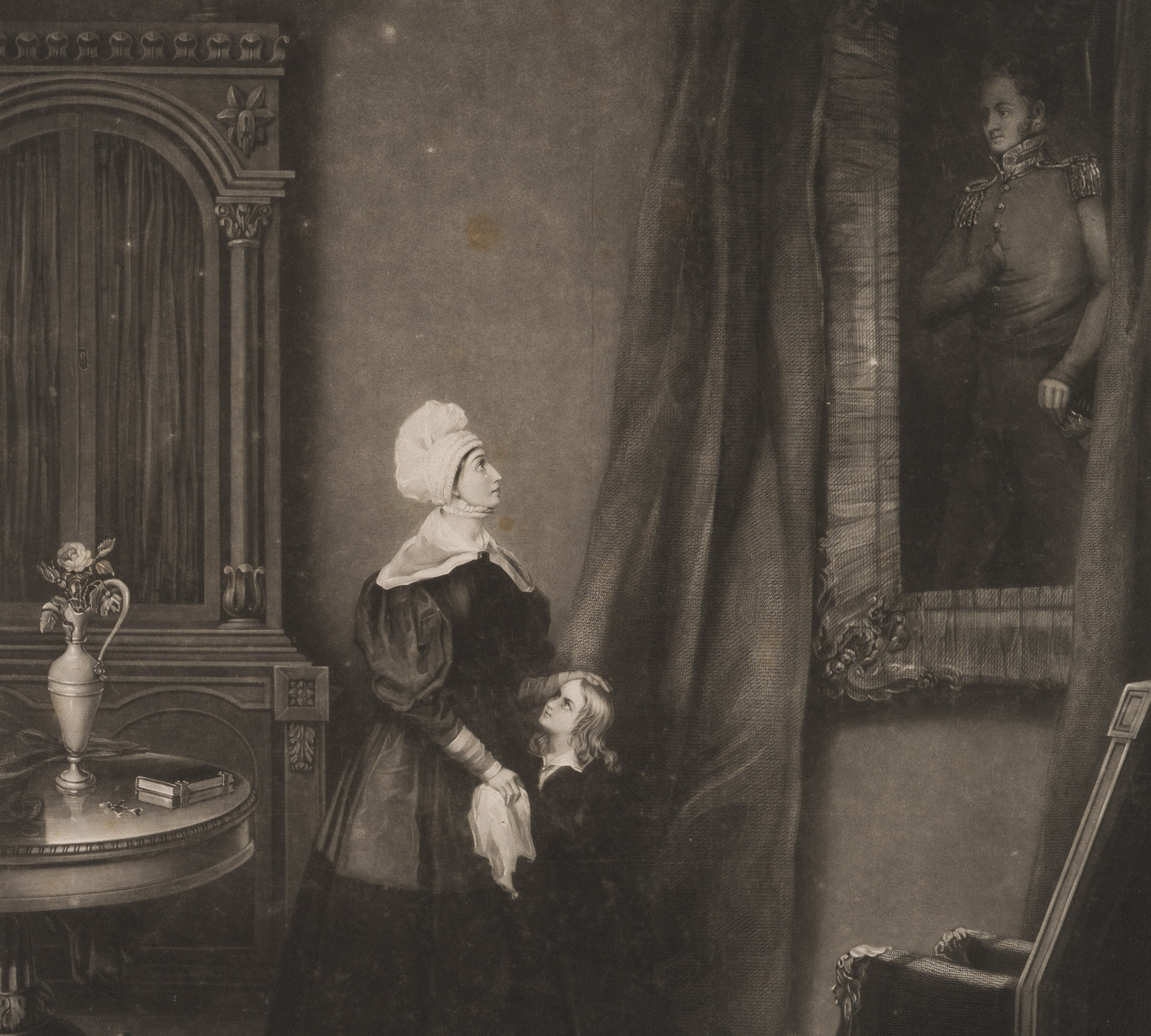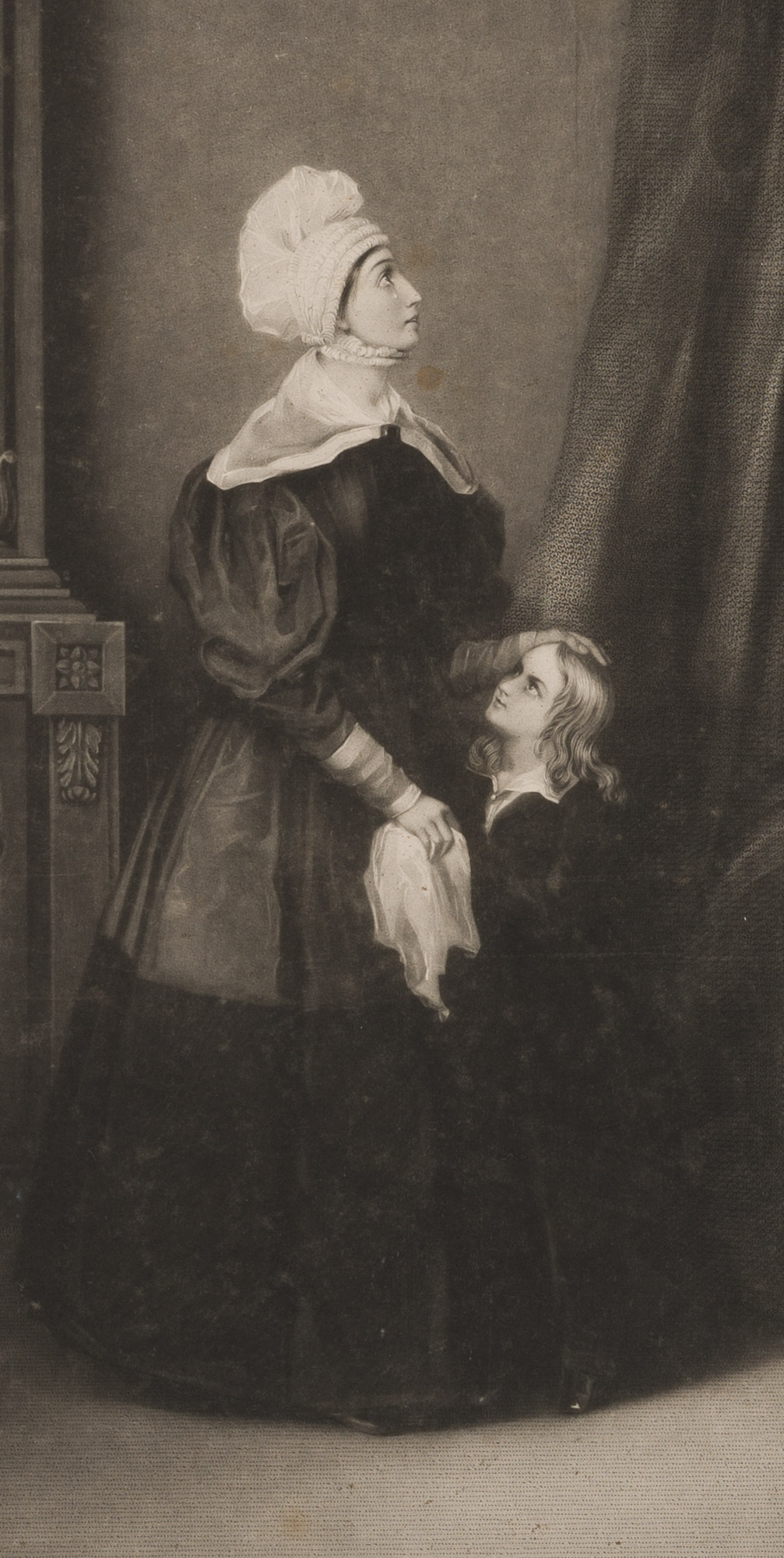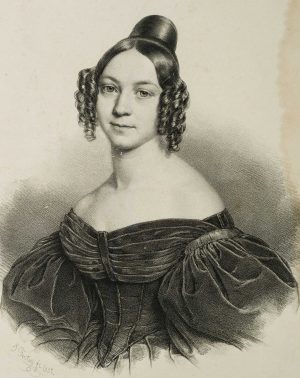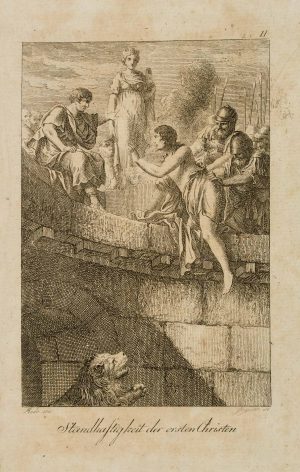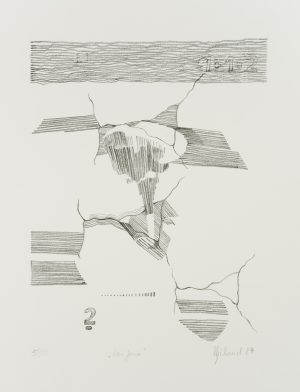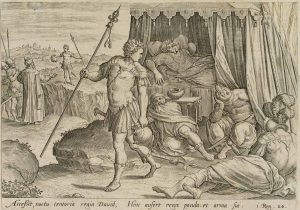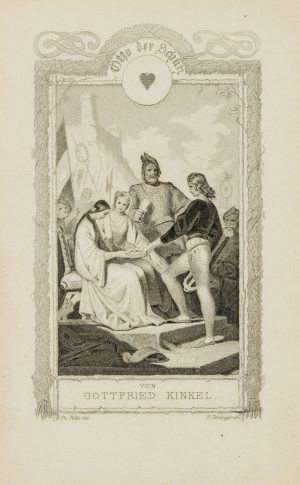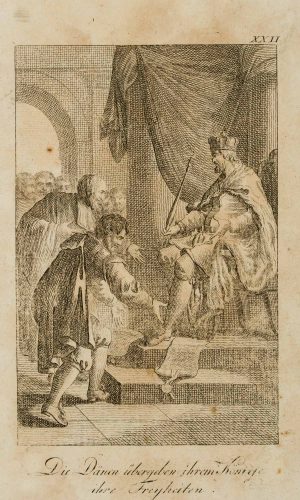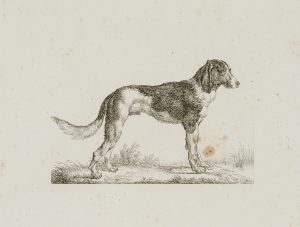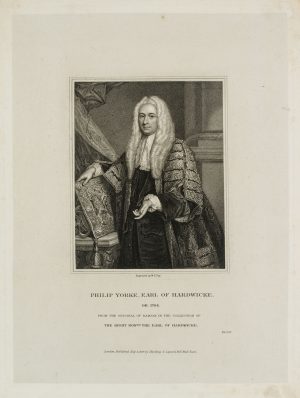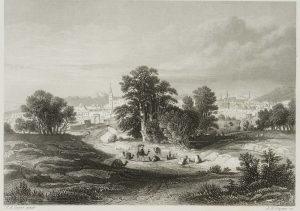James Egan (1799 County Roscommon – 1842 ) nach Aaron Edwin Penley (1806 – 1870 ), Der Schatz der Witwe, um 1880, Mezzotinto
- Technik: Mezzotinto auf Büttenpapier, montiert auf Papier
- Bezeichnung: Unterhalb der Darstellung innerhalb der Druckplatte signiert, bezeichnet und mit Dedikation: “Engraved by J. Egan from a drawing by A. Penley / The Widow’s Treasures. To John Paton Esq. Of Cornbrook House Manchester / This Engraving from the original drawing in his possession is respectfully inscribed by The Publishers.” sowie mit Publikationszeile: “London published by B.B. King Monument Yard, Ackerman & Co. F.G: Moon threadneedle street and J.C. Grundy Manchester.”
- Datierung: um 1880
- Schlagworte: Personen, Genre, Großbritannien, Figürlich, 1850-1899
- Größe: 52,5 cm x 41,2 cm, Darstellung: 42,8 cm x 34,8 cm
- Zustand: Guter Zustand. Die Darstellung macht einen sehr guten Eindruck. Das Blatt ist altersbedingt blass stockfleckig und berieben, stellenweise mit kleinen Unregelmäßigkeiten im Papier, wie im Bereich des Bilderrahmens oder der Wand; die oberen Blattecken sind abgerissen, auf der Unterlage erhalten.
English Version:
James Egan (1799 County Roscommon – 1842 ) after Aaron Edwin Penley (1806 – 1870 ), The Widow’s Treasure, c. 1880, Mezzotint
- Technique: Mezzotint on , mounted on Paper
- Inscription: Unterhalb der Darstellung innerhalb der Druckplatte signiert, bezeichnet und mit Dedikation: “Engraved by J. Egan from a drawing by A. Penley / The Widow’s Treasures. To John Paton Esq. Of Cornbrook House Manchester / This Engraving from the original drawing in his possession is respectfully inscribed by The Publishers.” sowie mit Publikationszeile: “London published by B.B. King Monument Yard, Ackerman & Co. F.G: Moon threadneedle street and J.C. Grundy Manchester.”
- Date: c. 1880
- Keywords: 19th century, Figurative, People, United Kingdom,
- Size: 52,5 cm x 41,2 cm (20,7 x 16,2 in), Depiction: 42,8 cm x 34,8 cm (16,9 x 13,7 in)
- Condition: Good condition. The image makes a very good impression. The sheet is pale foxed and rubbed due to its age, in places with small irregularities in the paper, such as in the area of the picture frame or the wall; the upper corners of the sheet are torn off, preserved on the backing.

